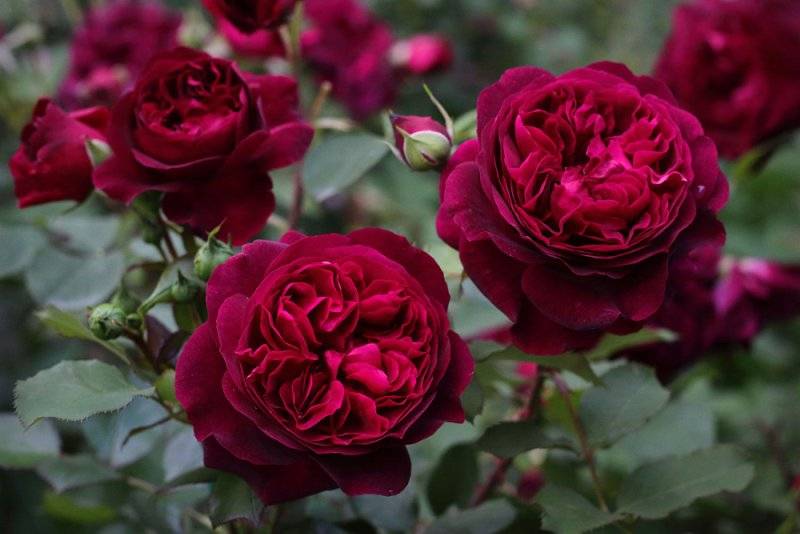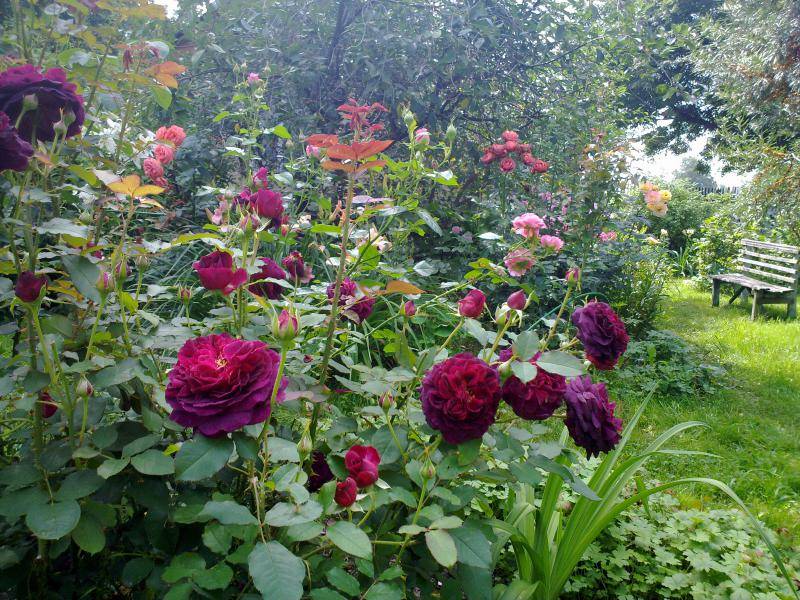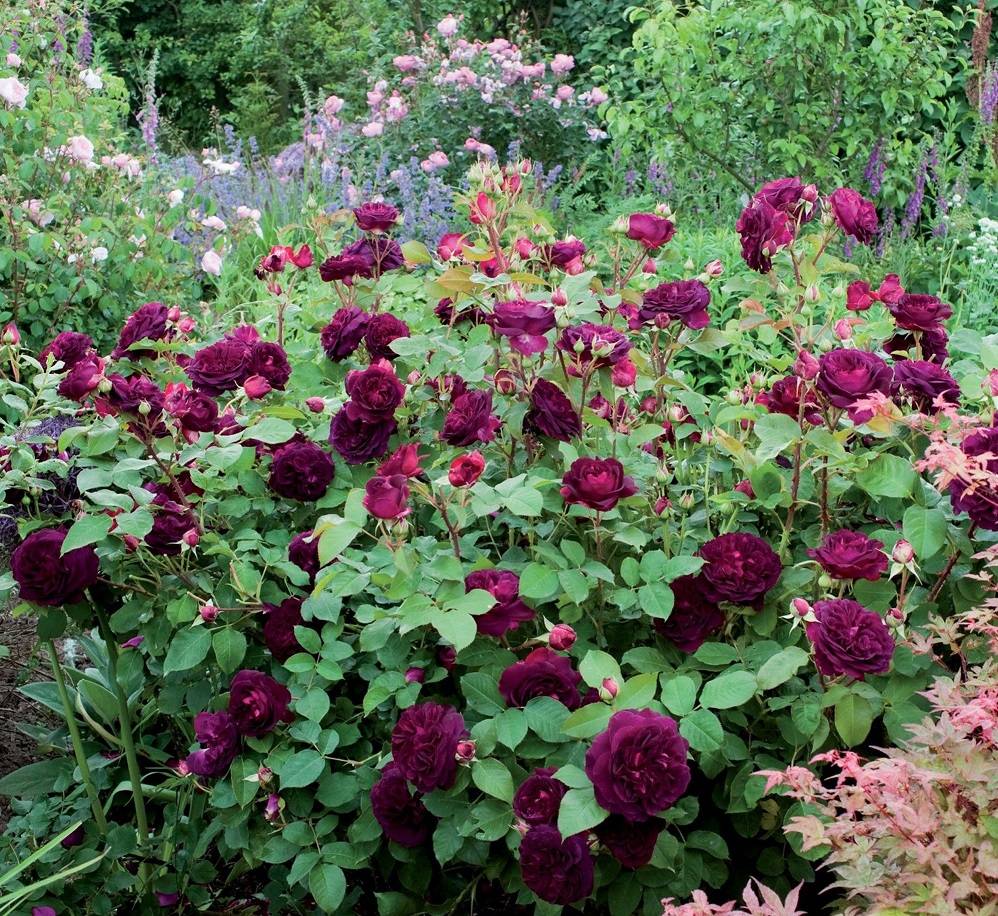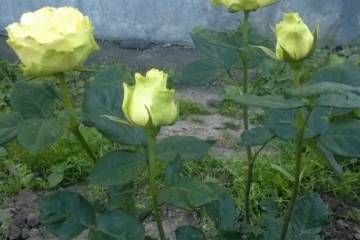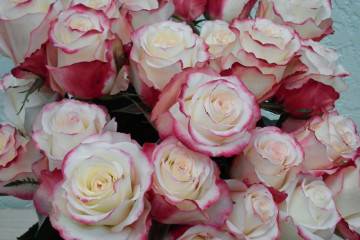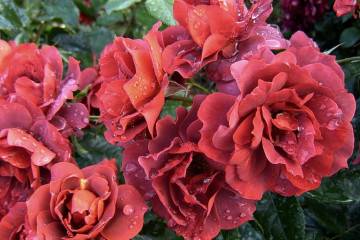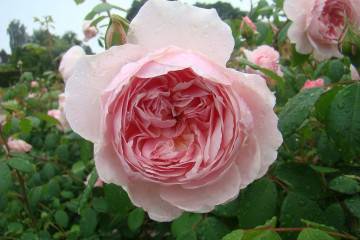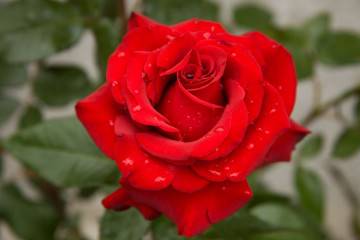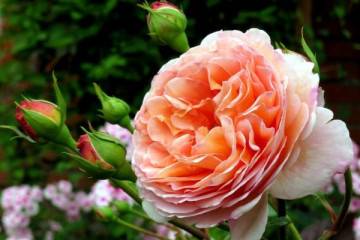Rose Munstead Wood - description of varietal plant
Content:
Rose Manstead Wood is a bright representative of David Austin's hybrid varieties, which has a classic flower shape. The plant has its own characteristics that must be taken into account when planting and growing.
Rose Munstead Wood: description and characteristics
Munstead Wood was first introduced at one of our rose shows in 2007. The creator kept the flower's pedigree a secret. It is only known that the rose got its name in honor of the English garden park in Surrey, which belonged to the famous gardener Gertrude Jekyll.
The bush is compact, its maximum height and width rarely exceed 1 meter. The branches are covered with bright green leaves, which, when emerging from the buds, have a bronze-red tint. The dense buds, composed of 75 petals, are crimson before opening. The blossoming flower 10 cm in diameter resembles a wide bowl painted in a velvety deep burgundy color. The aroma is strong, fruity, with pronounced notes of blueberries and blackthorns.
The positive qualities of a flower include:
- frost resistance (up to -23 ° C);
- immunity to powdery mildew, black spot;
- good tolerance to high humidity;
- the ability to quickly recover after pruning;
- long preservation of cut flowers.
The disadvantages include the presence of thorns and the tendency of flowers to fade in the sun. Sometimes they note the excessive saturation and obsession of the aroma.
Thanks to the neat shape of the bush, the English Manstead Wood rose is grown not only in the open field, but also in tubs. This park variety is often used to form curbs or as part of bright garden compositions. Also, the masters of creating an artificial landscape recommend planting Manstead Wood in the form of a single scrub against the background of an emerald lawn.
How to properly plant in open ground
To grow Manstead Wood successfully, it is important to plant it correctly in the right place. Although the procedure is simple, it differs in some subtleties. It is better to choose seedlings as planting material. They can have an open or closed root system.
It is better to plant seedlings with an open root system in May, when the ground is warm enough. The container flower can be transferred outdoors throughout the active season. The main thing for autumn planting is sufficient time before the onset of frost, otherwise the plant will not have time to adapt.
When looking for a corner for Manstead Wood, it is important to remember that she will not need much space. The optimal conditions are as follows:
- warm and well-lit area;
- lack of drafts;
- nutritious, breathable soil with neutral acidity.
It is best to opt for a space that is open to the sun in the morning and evening, but shaded during the daytime.
The soil for planting the Master Wood rose is dug in advance, organic matter and drainage are introduced.Before planting in the ground, the root system of the seedling should be inspected and non-viable parts should be removed by dipping the sections into crushed activated carbon.
Planting procedure step by step
Rose planting is carried out in a certain sequence. They act like this:
- Dig a landing hole with a depth of 2 shovel bayonets.
- Drainage is laid at the bottom, sprinkled with earth on top of it.
- The seedling is placed in a hole, the roots are carefully straightened.
- The pit is filled up, compacting the soil.
- The plant is watered with settled water.
After completing the planting, it is recommended to mulch the ground around the flower.
Plant care
Taking care of Manstead Wood isn't all that difficult. All care procedures are reduced to regular watering, feeding, pruning and preparing for winter.
The variety needs abundant watering no more than once a week. 2-3 days after the soil is moistened, it is loosened and weeds are removed from the site, which can take food from the flower.
In the spring, the bush is fed with wood ash and mineral nitrogen-containing compounds. Also, a little compost or humus is introduced into the root zone and mulched. After the end of flowering, the rose is again fertilized with minerals, but this time without nitrogen. Preparing the plant for wintering, it is fertilized with potassium monophosphate.
During spring pruning, damaged and dried shoots are removed from the bush. Slices can be processed with garden pitch.
Features of wintering a flower
Preparing the bush for wintering, the leaves and the last flowers are removed from it. The rose is spud up to a height of 20 cm and covered with spruce branches, a non-woven fabric is pulled on top. In the spring, the shelter is removed.
Blooming rose
Planted in a suitable place, the Manstead Wood rose blooms very profusely. Its flowers last at least a week, unless it is shaded. In the open sun, the buds are paler in color.
Munstead Wood is a multi-flowering rose. Usually, flowering waves replace one another almost imperceptibly. Only occasionally there are several days between them, when the bush rests.
Lush blooming flowers tend to pick up and retain moisture between the petals. From this, the bush bends to the ground and branches can break. To prevent this from happening, it is recommended to install a support around the plant, and after rain, gently shake it.
What to do if the rose does not bloom
Rose Master Wood may refuse to bloom if it is originally planted in the wrong place. Sometimes the situation can be corrected by feeding with potassium and magnesium, but if excessive shading is observed, then only a transplant will help.
Flower propagation
The best way to propagate Manstead Wood is by rooting cuttings. If you have an adult healthy bush, you can prepare seedlings yourself. The rose is cut throughout the season, until early October. The main thing is that the segments planted in open ground have time to take root before the onset of the first frosts.
Cuttings 8 cm long are cut from strong shoots, making the upper cut straight and the lower cut at an angle of 45 degrees. Thorns and lower leaves are removed from the segments. To accelerate the formation of roots, the workpiece is kept in a growth stimulator.
Cuttings are placed in the ground, deepening to half the length at a distance of 15-30 cm from each other. The seedlings are covered with transparent film or glass jars, creating a greenhouse environment. They are periodically ventilated, moistened and loosened. You can transplant young plants to a permanent place after 2 years.
Diseases, pests and ways to control them
Despite good immunity, if the rules of care are violated, the flower may undergo black spot. In this case, it must be treated with the appropriate fungicides.
If the bush was attacked by parasites, then the fight against them at the initial stages is possible with the help of folk remedies. In the absence of an effect, insecticides are used.
Taking up the cultivation of the Manstead Wood rose, it is important to carefully study the agricultural technology. A properly planted bush that receives proper care will be a decoration for any garden.
